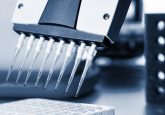Update of the EBF recommendation for the use of DBS in regulated bioanalysis integrating the conclusions from the EBF DBS-microsampling consortium

The European Bioanalysis Forum dried blood spots/microsampling consortium is reporting back from the experiments they performed on further documenting the potential hurdles of the DBS technology. Their experiments focused on the impact of hematocrit changes, IS addition, spot homogeneity, aging of spots and stability of fresh blood and cards. Results from these experiments demonstrate that the issues of DBS in regulated bioanalysis are real and that the technology will need additional improvements to be ready for use as a general tool for regulated bioanalysis. In addition, results on fresh blood and card stability were shared at international meetings and will be reported at a later date.
The technology of dried blood spots (DBS) does not need further introduction. Ever since the technology was reintroduced in pharmaceutical R&D in the early 2000s [13], numerous groups contributed to the broader understanding of DBS in different stages of drug development. Advantages, related to the 3R principles (replacement, reduction, refinement of animals in drug development), cost savings for bioanalysis especially around sample shipment and storage and patient comfort are acknowledged. Challenges, mostly related to the bioanalytical hurdles of the technique, have been and continue to be extensively described in peer reviewed literature or discussed at international conferences and workshops as part of the increased visibility of DBS in the regulated bioanalytical arena.
Click here for the full article.





